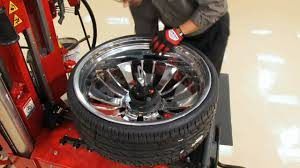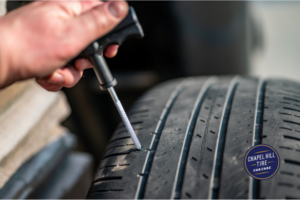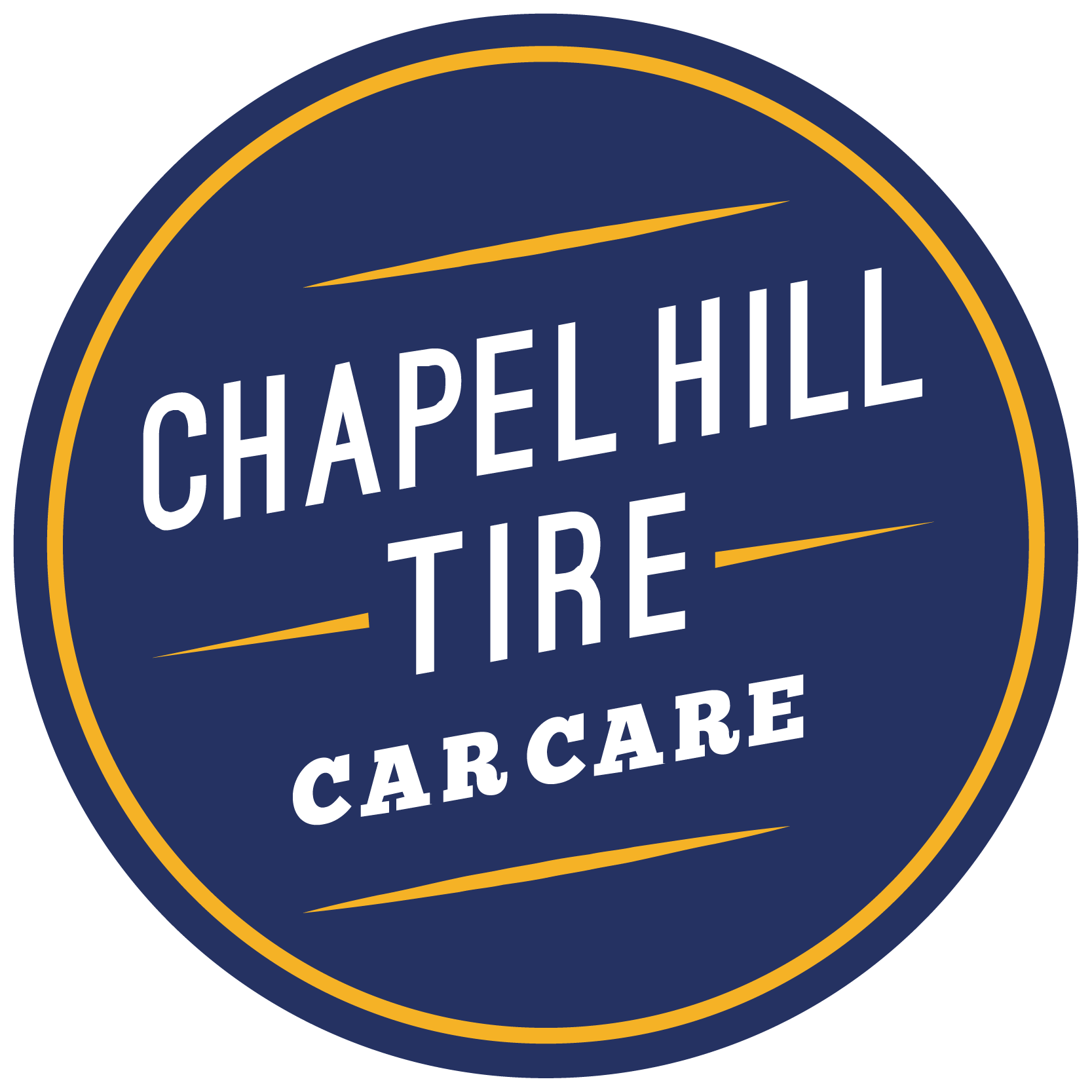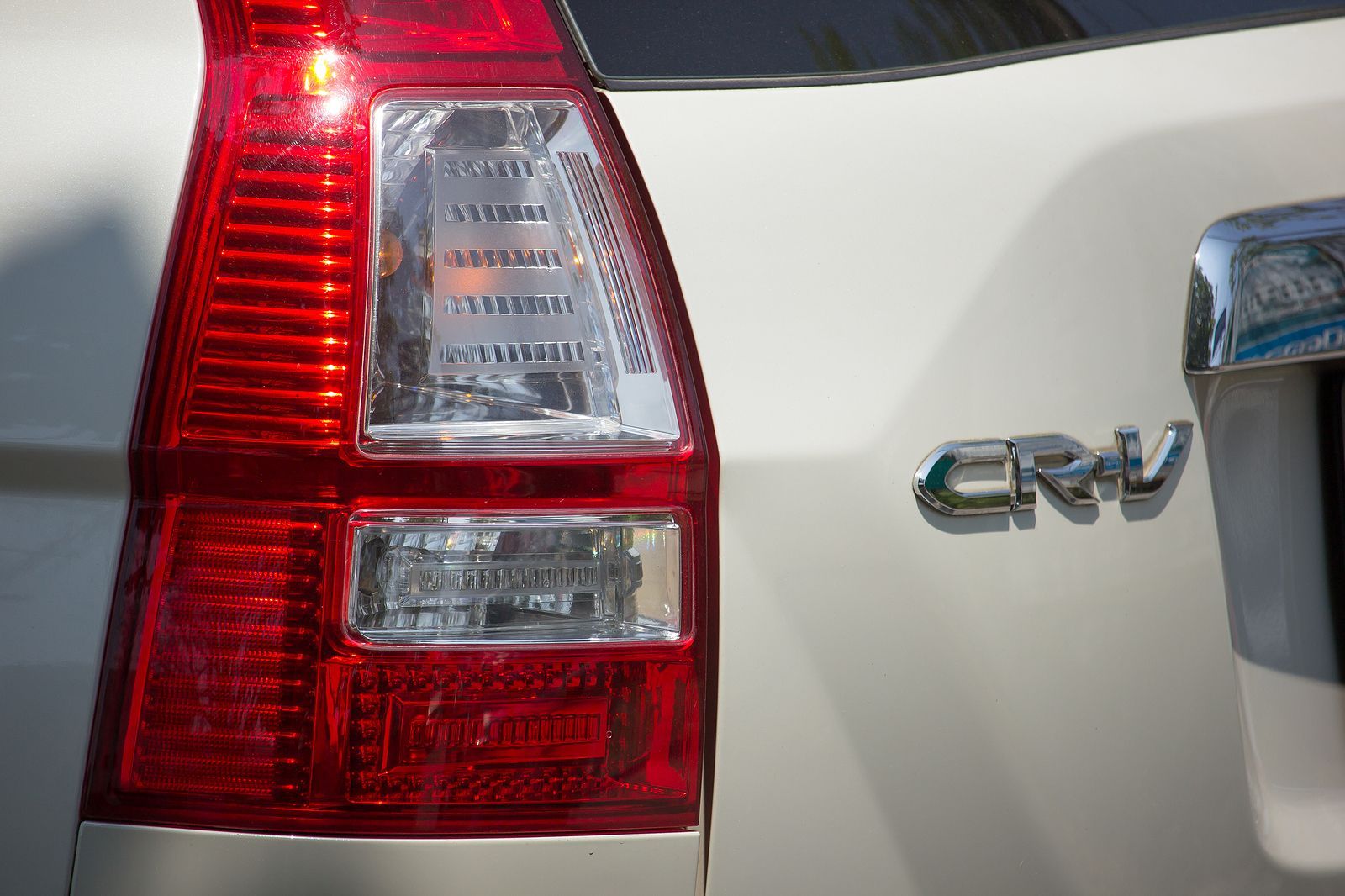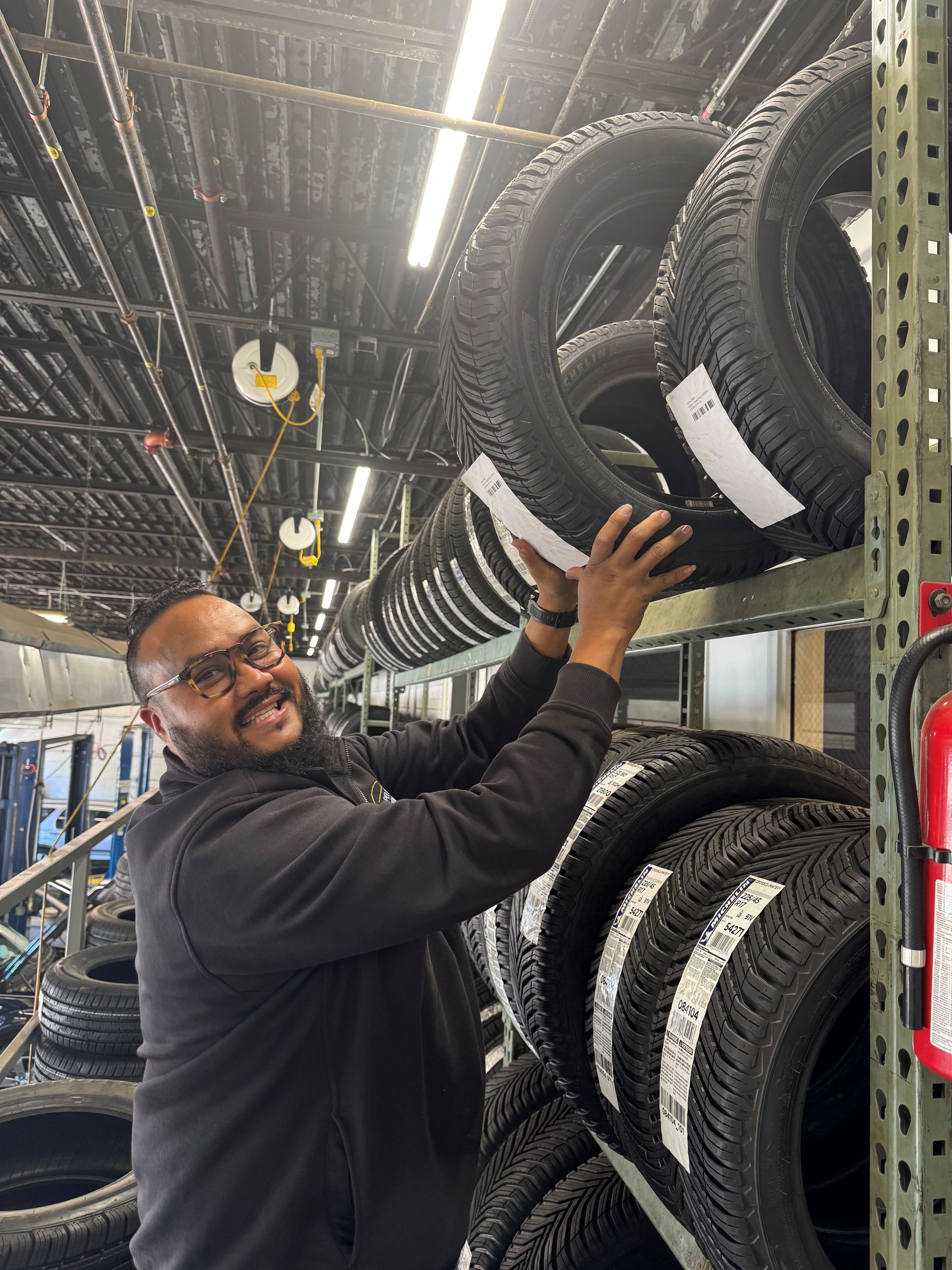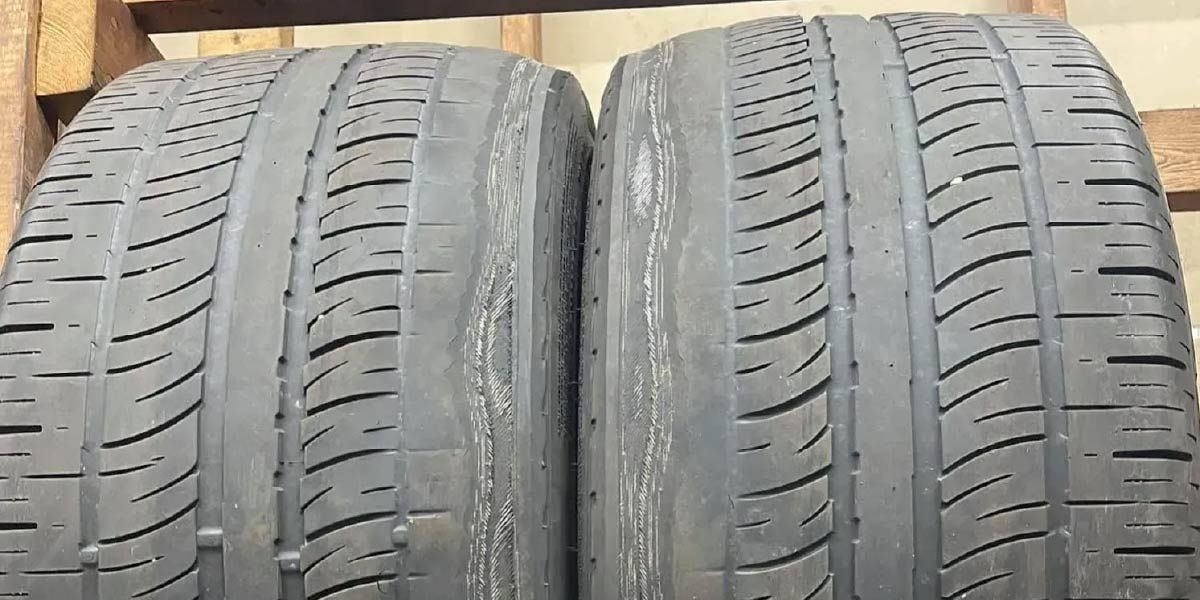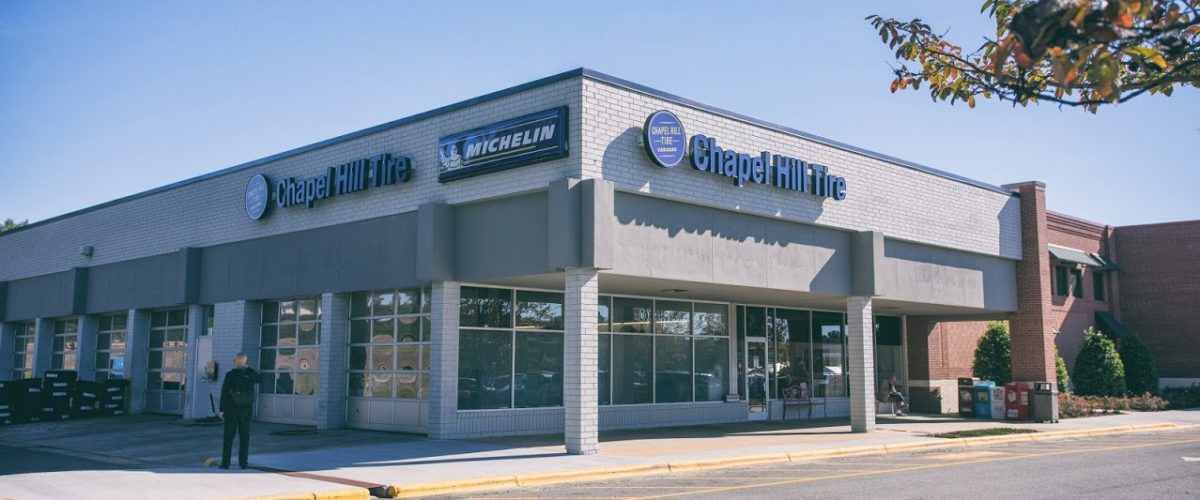How to Read Your Tire’s DOT Number
Auto Shops Located in: Chapel Hill, Durham, Taleigh, Apex, and Cary North Carolina
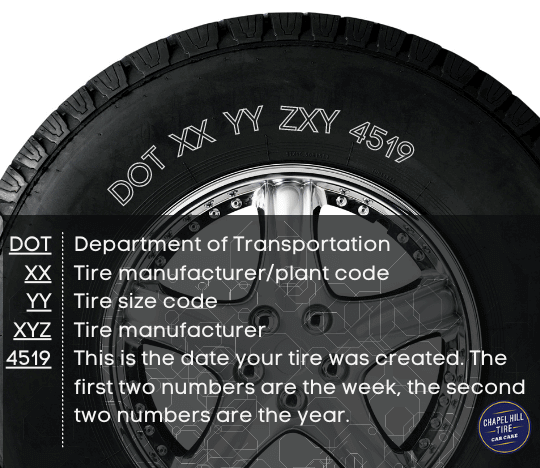
If you look closely at any tire, you can find an engraved DOT number. This number gives you valuable insights into the tires keeping you safe. However, it is not always clear to drivers what their DOT number is communicating. The local auto mechanics are here with the full breakdown of how to read a tire’s DOT number.
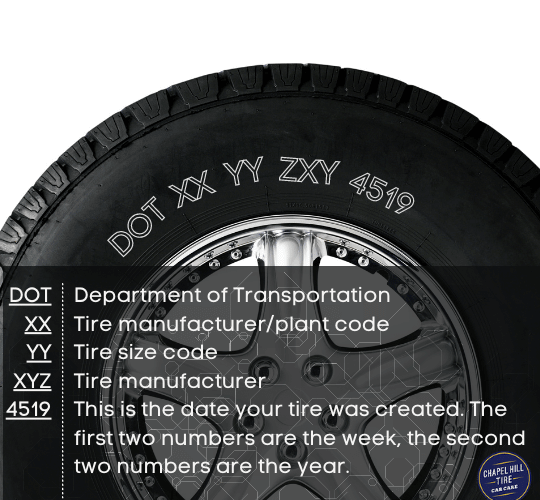
The Beginning: DOT
Every tire identification number begins with the letters DOT (Department of Transportation). It is a marker that verifies you are getting tires that meet the Department of Transportation’s guidelines. It also serves as a clear, universal starting point for a tire’s TIN (tire identification number).
Tire Plant Code: Manufacturer’s Identification Mark
The next group of numbers contains two characters that indicate your tire’s plant code. Every tire manufacturing plant has a unique two-character code, often made with one number and one letter. Why is this important? If there is a tire recall, safety issue, or another tire concern, it can be traced back to the plant that produced the tire(s) in question.
Tire Size Code
The next two numbers or letters are your tire size code. The tire size code is a little less straightforward than other markings. Originally, the National Highway Traffic Safety Administration (NHTSA) had a universal list of tire sizes and the two-digit codes that represented them. However, the DOT now lets manufacturers determine their own code for tire size, according to the US Federal Register. This change was intended to make it easy for manufacturers to produce new tires without requiring the NHTSA to update its code list. Unfortunately, it makes it challenging to translate the tire size on your tire’s DOT number. Thankfully, there is an easier way to tell your tire size (more on this below).
Need new tires? Find the perfect fit with our Tire Finder tool at Chapel Hill Tire.
Tire Manufacturer Characteristics
The third set of values indicates the manufacturer’s characteristics. It is essentially a space for manufacturers to provide tire distinction or other brand-specific insights. The US Federal Register states, “The third grouping may be used at the manufacturer’s option to provide any other significant characteristics of the tire. Except for cases in which a tire is manufactured for a brand name owner, the third grouping is not required.” Manufacturers then submit their list of codes to the National Highway Traffic Safety Administration.
Much like the tire size code, this grouping often does not provide valuable information for drivers. It is more so used for recalls, errors, and other official identification needs.
Tire Age
Without ever touching the road, a tire can go bad simply due to its age. After 5 years of age, tires begin experiencing thermo-oxidative degradation. This chemical reaction can severely impact tire safety on the road.
The final four digits on your DOT number will tell you the tire’s age. The first two numbers of this grouping indicate the week of the year your tire was manufactured. The final two digits indicate the year that your tire was manufactured. For example, if your final four DOT numbers are 3020, your tire was manufactured in the 30th week of 2020. You can find more information in our full guide to tire age here.
Finding Tire Size, Recommended Tire Pressure, and Other Information
While DOT numbers are helpful, they might not tell you everything you need to know about your tires. As tire experts, we often have customers ask:
- How can I tell my tire size dimensions?
- What is the recommended tire pressure (PSI) of my car’s tires?
- What about cold tire pressure recommendations?
Many drivers expect to find the answers to these and other questions in their DOT number, but this is not the case. Tires brands often include additional insights on the face of the tire. However, it is frequently much easier to view tire information on your tire panel. If you open your driver’s-side door and turn to face the seat, you will find a sticker against your door frame with information about your tires. You can also find additional details in your owner’s manual.
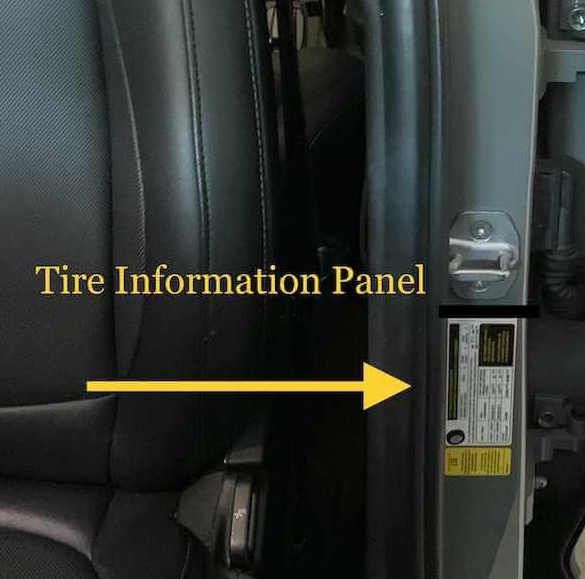
Your Local Tire Experts: Chapel Hill Tire
When you are due for new tires, the mechanics at Chapel Hill Tire are here for you. We proudly serve the greater Triangle area with our 12 locations across Raleigh, Apex, Cary, Durham, Chapel Hill, and Carrboro. Our mechanics also commonly serve nearby areas, including Knightdale, Pittsboro, Wake Forest, Hillsborough, Morrisville, and beyond. You can conveniently buy your new tires online using our Tire Finder tool. For all of your tire services, vehicle services, and car care needs, make an appointment today with your nearest Chapel Hill Tire.
We’ve got all your automotive repair needs covered.


